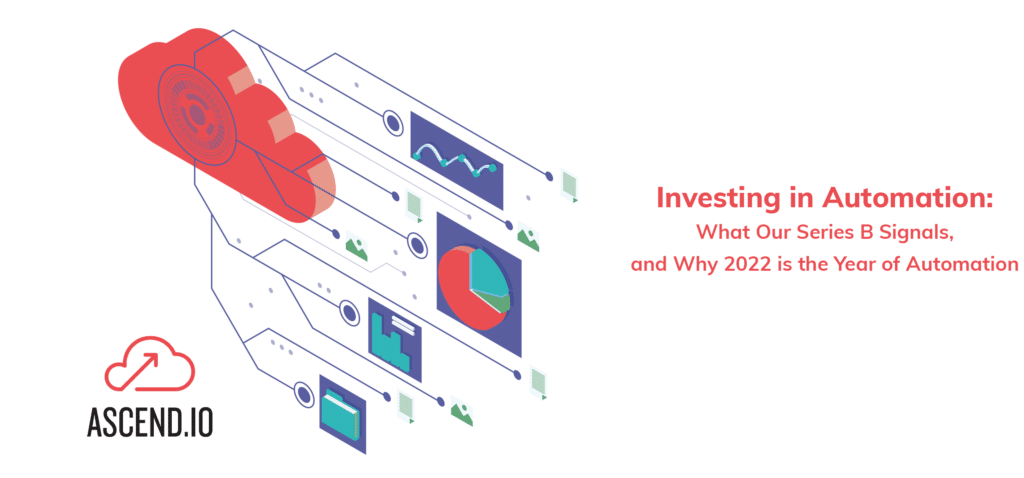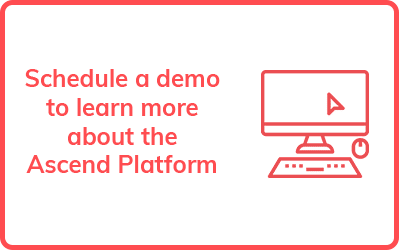What Our Series B Signals, and Why 2022 is the Year of Automation
Don’t tell anyone 😀, but I’m going to give you a sneak peek of the 2022 DataAware Pulse Survey results. We asked 540 CDOs, data engineers, data analysts, data scientists, and enterprise architects 15 questions about their team, workloads, priorities, and more. The results are illuminating, to say the least.
This year’s survey shows that a shocking number of data teams today – more than 9 in 10 – are at or over capacity. In fact, data team capacity has only marginally improved since our 2021 survey, which found 96% of teams to be at or over capacity. (We’ll be revealing the exact number next week at the 2022 Data Automation Summit). Every little bit counts, but we’re certainly hoping next year we make greater strides as an industry. Fortunately, we have a few ideas on how… 😉
Each year we ask a simple question: what is growing faster, your team, or your company’s need for data products. This year, Data Engineers were the most strained team, with more than 8 in 10 reporting the need for data products is growing faster than their team size.
Across all teams, however, everyone is hurting when it comes to self service and data access. Respondents (especially Data Scientists) are spending several hours per day waiting to gain access to the data they need to do their jobs.
Luckily, there is hope. While only a small percentage of those surveyed reported their company had existing investments in automation, more than 4 in 5 of those same people surveyed said that their teams plan to implement automation technologies in the next 12 months to help ease these bottlenecks.
Data teams are still underwater, and while the percentage is getting better, it’s well, only within the margin of error for statistics. Productivity is a topic that you’ve probably seen us write about a lot on this blog or heard us talk quite a bit about on the DataAware podcast, and that is because we need to solve for this problem, and fast.
What’s Next for The Ascend Data Automation Cloud
Today, we are thrilled to announce we’ve closed $31M in funding with the Series B led by Tiger Global with participation from Shasta Ventures and existing investor Accel. The press release gives more details on the funding.
Now, on to what our customers and future customers are likely most curious about. How does this new funding impact them? The simple answer is that it enables us to accelerate the delivery of platform features and updates that improve your productivity and reduce the burdens of managing and maintaining data pipelines and workloads.
The Ascend platform started as a Spark-based platform, with the ability to use Ascend for data engineering on Snowflake added in November of 2021, and then functionality on BigQuery was released last month. Accelerated development means we’ll be able to bring you Ascend on additional processing engines like AWS Glue, AWS Redshift, Microsoft Synapse, and more in the coming months. In fact, if you’re attending the Data Automation Summit on April 13 – 14, you may see and hear a sneak peek about some of this!
With this availability on a broader range of data lakes and warehouses (and lakehouses), more teams can take advantage of Ascend’s advanced automation for data ingestion, transformation, delivery, orchestration, and observability capabilities. But that is not where the innovation stops.
Next Up: Full Data Mesh Automation
There has been a common thread woven through our conversations with customers and other data engineers and data leaders. The ability to use the Ascend Data Automation Cloud to automate the creation, management, and operation of data pipelines on one compute engine with a single control plane is great. But as we all know, organizations rarely process data on one single cloud, data warehouse or data lake, and for organizations that have a data warehouse here and a data lake over there, they could benefit from an Ascend control plane in each location.
For those organizations, we’re thrilled to be working toward full data mesh automation for your data workloads that span all of your clouds, data warehouses and data lakes—with a single control plane. No matter where your data starts, where your data is processed, and where your data ends up—Ascend will be the central nervous system automating those workloads. Keep an eye out here for more information on these updates and availability later this year.
Build for 10x, Plan for 100X
I can’t write this post without also taking the opportunity to say how proud I am of the entire Ascend.io team for the work and dedication over the last few years which helped bring us to this place. It’s rare to work with a team that has such a singular focus on customer success and happiness. This focus has enabled us to navigate the last three years with exceptional growth, and it is how I know we’ll continue to deliver the technology and support that supercharges the productivity of the data teams we work with.
I couldn’t think of a better team to work with as we move forward with the Ascend Data Automation Cloud to bring you more advanced data engineering automation!






